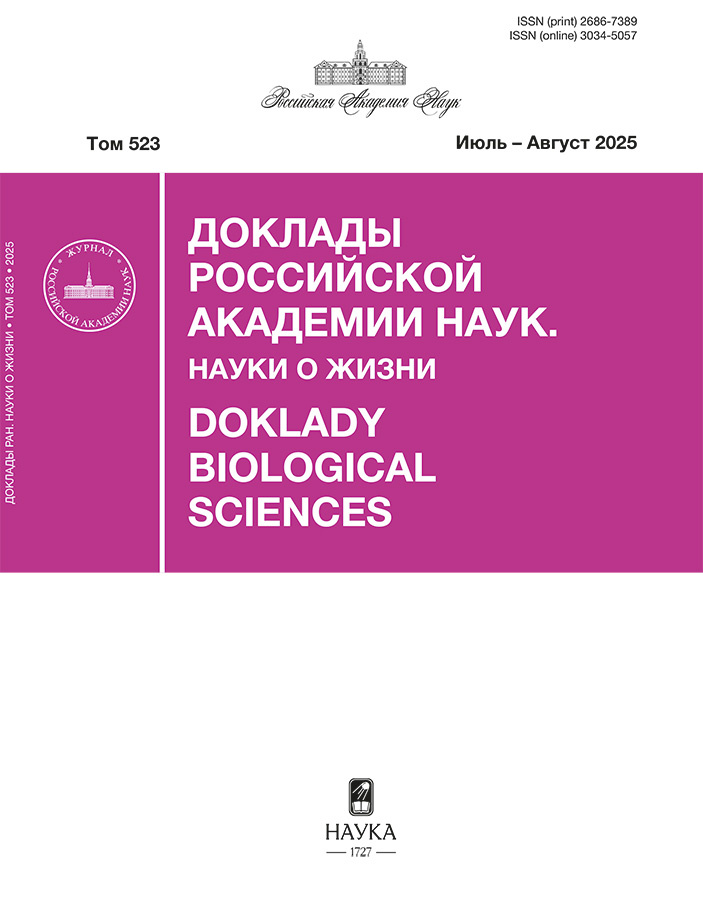КО-РЕПРЕССОР NCoR ВЗАИМОДЕЙСТВУЕТ С ТРАНСКРИПЦИОННЫМ ФАКТОРОМ KAISO ПО МЕХАНИЗМУ, ОТЛИЧНОМУ ОТ ЕГО ВЗАИМОДЕЙСТВИЯ С BCL6
- Авторы: Балагуров К.И.1, Георгиев П.Г.1, Бончук А.Н.1
-
Учреждения:
- Федеральное государственное бюджетное учреждение науки Институт биологии гена Российской академии наук (ИБГ РАН)
- Выпуск: Том 508, № 1 (2023)
- Страницы: 91-94
- Раздел: Статьи
- URL: https://journals.rcsi.science/2686-7389/article/view/135684
- DOI: https://doi.org/10.31857/S2686738922600777
- EDN: https://elibrary.ru/MPYLIL
- ID: 135684
Цитировать
Полный текст
Аннотация
Транскрипционный фактор позвоночных Kaiso специфично связывается с метилированными последовательностями ДНК при помощи цинковых пальцев C2H2-типа. Помимо C2H2-доменов, на N-конце Kaiso находится BTB/POZ домен, который формирует гомодимеры. Kaiso, как и несколько других хорошо исследованных BTB/POZ белков, в том числе BCL6, взаимодействует с белком NCoR (nuclear co-repressor), который определяет посадку на хроматин комплексов, репрессирующих транскрипцию. С помощью дрожжевой двугибридной системы мы показали, что N-концевой домен NCoR взаимодействует с С-концевыми цинковыми пальцами Kaiso, а не с его BTB/POZ доменом, как предполагалось ранее. Полученные результаты демонстрируют, что NCoR взаимодействует с различными доменами транскрипционных факторов, что может увеличивать эффективность привлечения NCoR-зависимых репрессорных комплексов в регуляторные области генома.
Ключевые слова
Об авторах
К. И. Балагуров
Федеральное государственное бюджетное учреждение науки Институт биологии гена Российской академии наук (ИБГ РАН)
Автор, ответственный за переписку.
Email: kostya.chamomilla@gmail.com
Россия, Москва
П. Г. Георгиев
Федеральное государственное бюджетное учреждение науки Институт биологии гена Российской академии наук (ИБГ РАН)
Email: kostya.chamomilla@gmail.com
Россия, Москва
А. Н. Бончук
Федеральное государственное бюджетное учреждение науки Институт биологии гена Российской академии наук (ИБГ РАН)
Email: kostya.chamomilla@gmail.com
Россия, Москва
Список литературы
- Prokhortchouk A., Hendrich B., Jorgensen H., et al. // Genes and Development. 2001. V. 15,13. P. 1613–1618.
- Yoon H., Chan D., Reynolds A., et al. // Molecular Cell. 2003. V. 12,3. P. 723–734.
- Mottis A., Mouchiroud L., Auwerx J. // Genes and Development. 2013. V. 27,8. P. 819–835.
- Yu J., Li Y., Ishizuka T., et al. // EMBO Journal. 2003. V. 22,13. P. 3403–3410.
- Guenther M.G., Barak O., Lazar M. A. // Molecular and Cellular biology. 2001. V. 21,18. P. 6091–6101.
- Horlein A.J., Naar A.M., Heinzel T., et al. // Nature. 1995. V. 377. P. 397–404.
- Park D.M., Li J., Okamoto H., et al. // Cell Cycle. 2007. V. 6,4. P. 467–470.
- Ahmad K., Melnick A., Lax S., et al. // Molecular Cell. 2003. V. 12,6. P. 1551–1564.
- Bilic I., Koesters C., Unger B., et al. // Nature Immunology. 2006. V. 7,4. P. 392–400.
- Huynh K.D., Bardwell V.J. // Oncogene. 1998. V. 17. P. 2473–2484.
- Zacharchenko T., Wright S. // IUCrJ. 2021. V. 8. P. 154–160.
- Buck-Koehntop B.A., Stanfield R.L., Ekiert D.C., et al. // PNAS. 2012. V. 109,38. P. 15229–15234.
- Jumper J., Evans R., Pritzel A., et al. // Nature. 2021. V. 596,7873. P. 583–589.
Дополнительные файлы












